 There are two ragweeds found throughout North America: Common ragweed (Ambrosia artemisiifolia) and Great ragweed (Ambrosia trifida). Let’s start with Great ragweed (pictured above) and study its parts and life cycle . . .
There are two ragweeds found throughout North America: Common ragweed (Ambrosia artemisiifolia) and Great ragweed (Ambrosia trifida). Let’s start with Great ragweed (pictured above) and study its parts and life cycle . . .
The lower leaves of Great ragweed have three — sometimes five — lobes (the trifida species name) while the upper leaves of a mature plant are elliptical:
As the plant begins its reproductive phase, it starts with growing its staminate (male) flower spikes:
Initially, the staminate flower spikes look fuzzy:
Here’s a closer view of the developing staminate flower spike. . .
. . . and a closer view. . .
. . . and an even closer view — with the staminate flowers open, spread along the spike, and producing pollen:
Let’s pull back and look at the top of a Great ragweed plant:
All those staminate flower spikes have elongated and look thin and “weedy” now. At the base of the staminate flower spike, and from various points where leaves are attached to the plant’s stalk, the pistillate (female) flowers have grown. They are well-positioned to receive the wind-borne pollen from the staminate flowers:
After the flowers are pollinated, the Great ragweed plant looks like this:
You can see the clusters of pistillate flowers — now developing the seeds — and the flower spikes stripped of their dead staminate flowers:
Here’s a closer view of the pistillate flower cluster (for scale, note the ant along the stem) . . .
. . . and a final very close shot of the pistillate flower as the seeds are developing:
Now, let’s turn to Common ragweed (Ambrosia artemisiifolia). As you look at these photos you can see the similarities between these two ragweeds. Common ragweed is in the foreground and some leaves from Great ragweed are in the background (in the photo below). This gives a sense of the relative difference in size between the two ragweeds.
Common ragweed has deeply cut lobes on all its leaves:
Here are its developing staminate flower spikes:
Just as with Great ragweed, the Common ragweed’s flower spikes elongate . . .
. . . and the flower heads spread along the length of the spike:
The pistillate flowers, again, are primarily at the base of the staminate flower stalk:
This final photo is a close-up view of the clustered pistillate flowers on a Common ragweed plant. The dead stalk to the left is the staminate flower spike. We are looking down into the pistillate flower clusters.



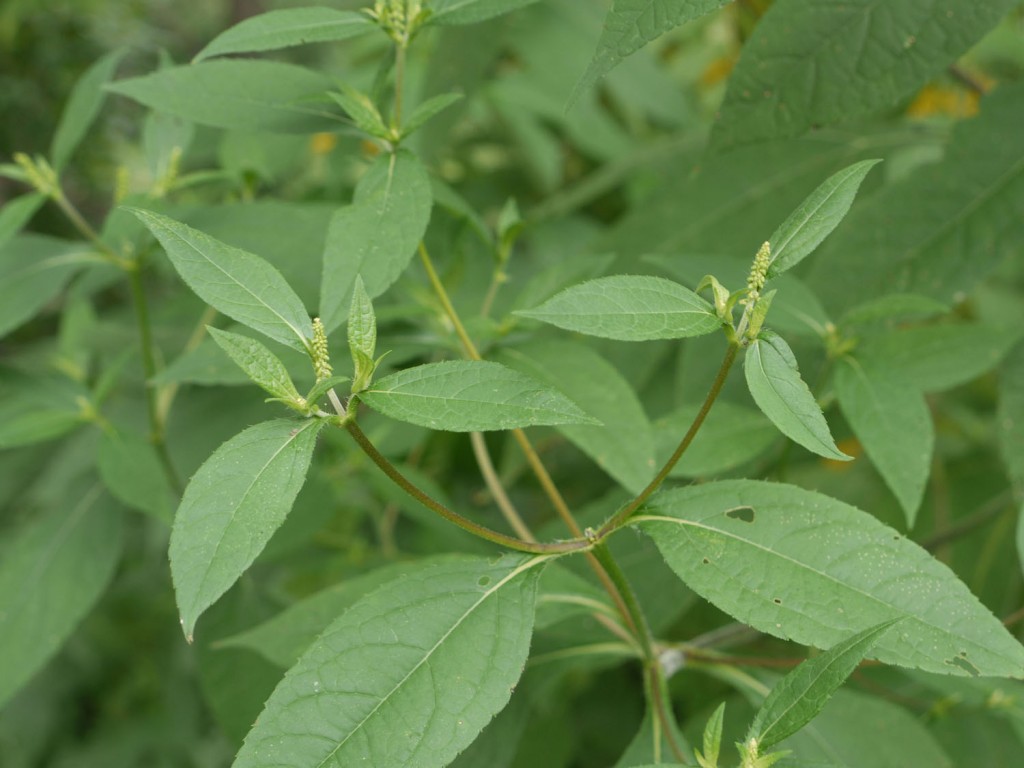

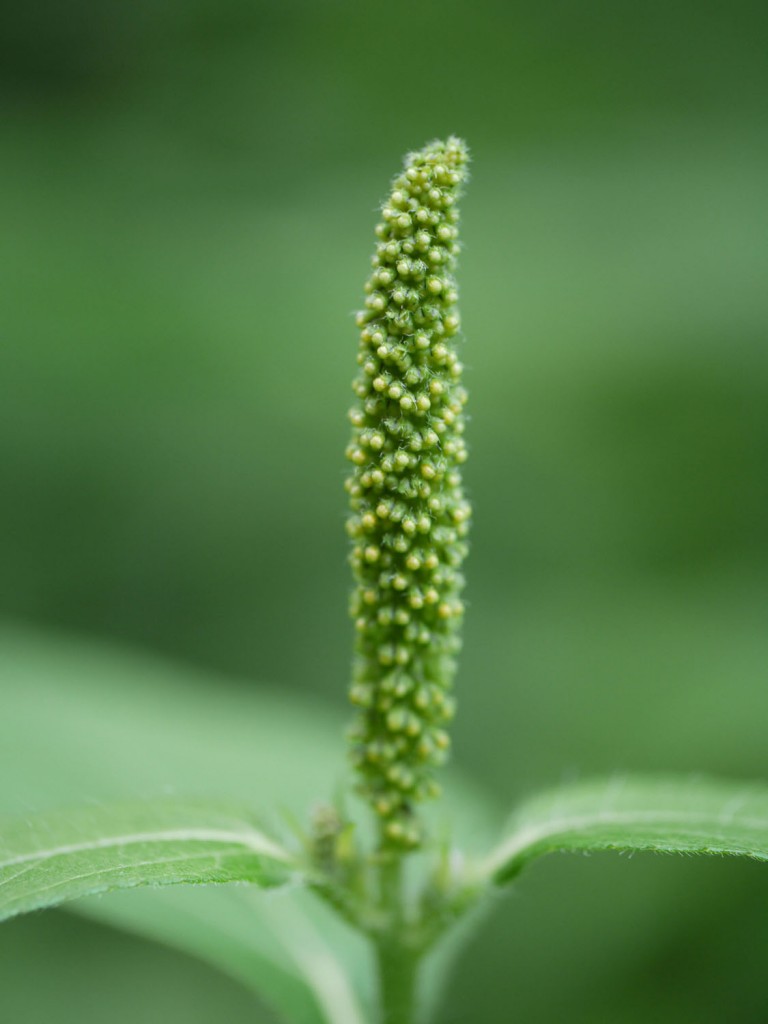
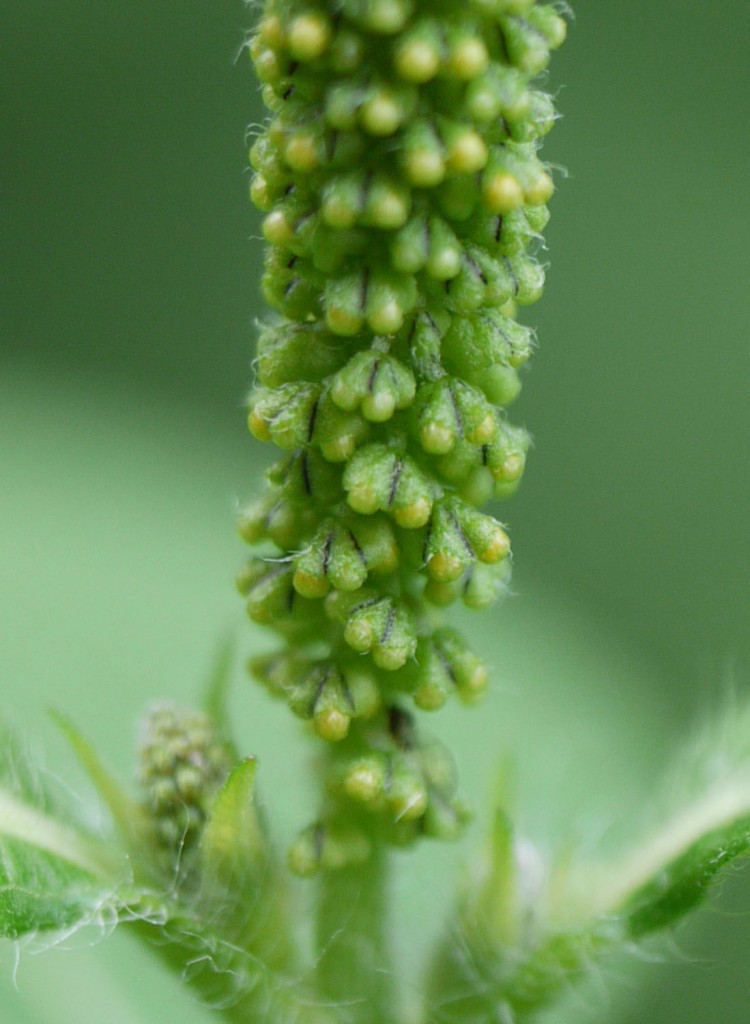
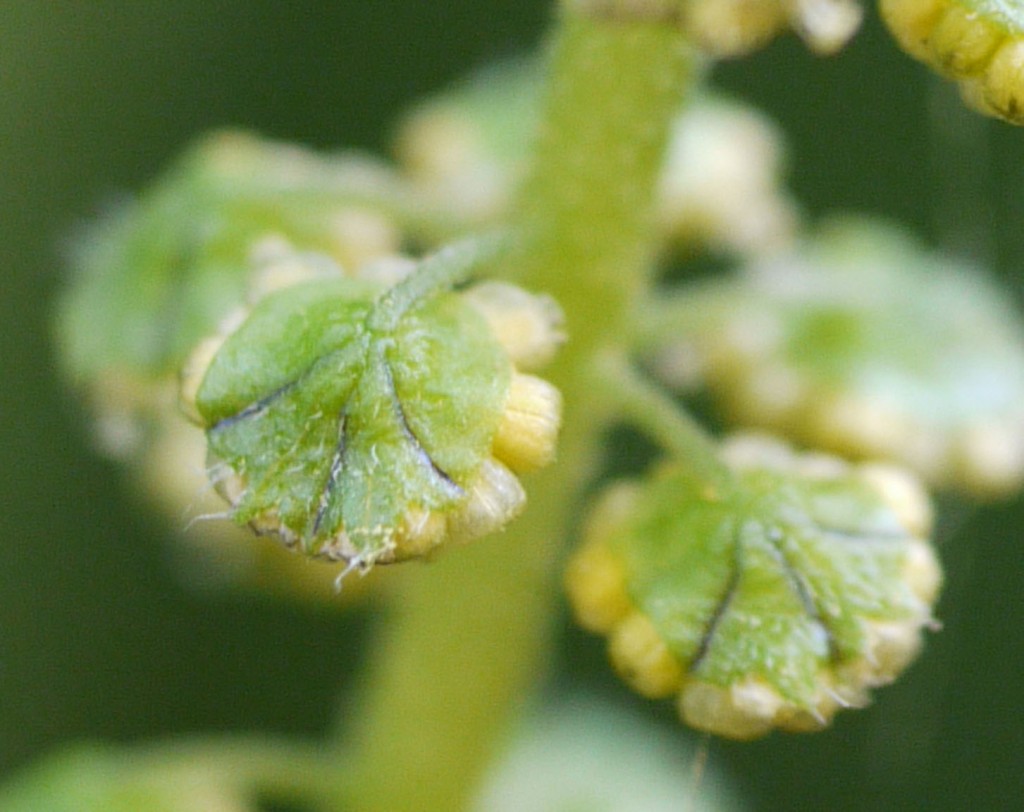
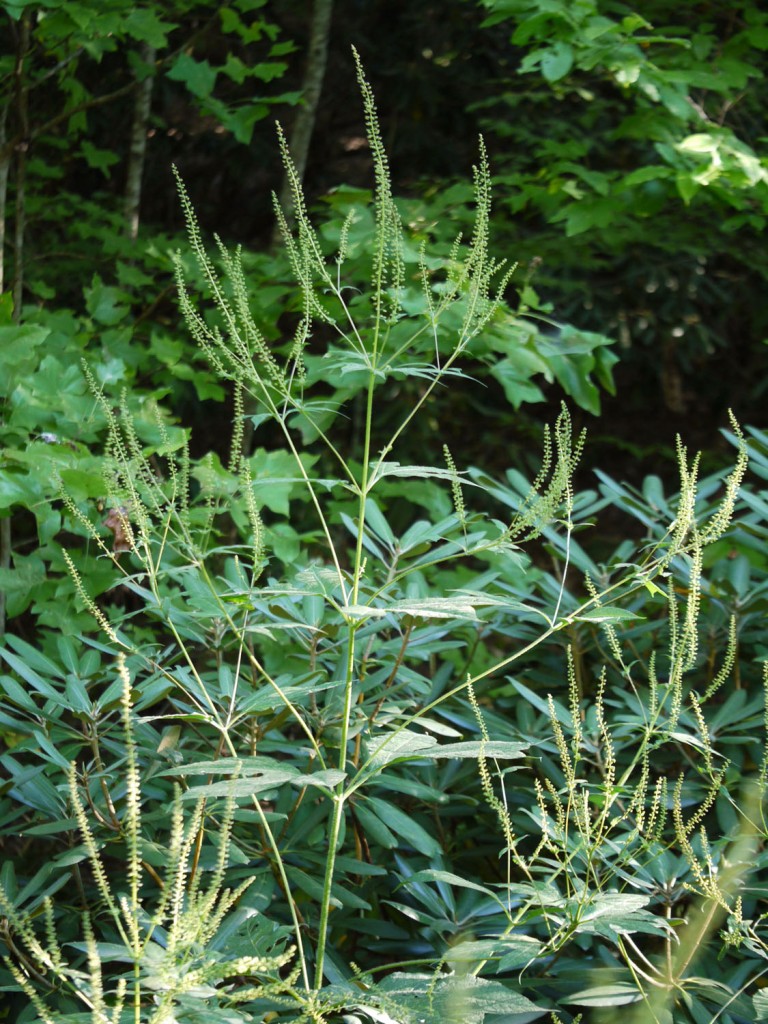
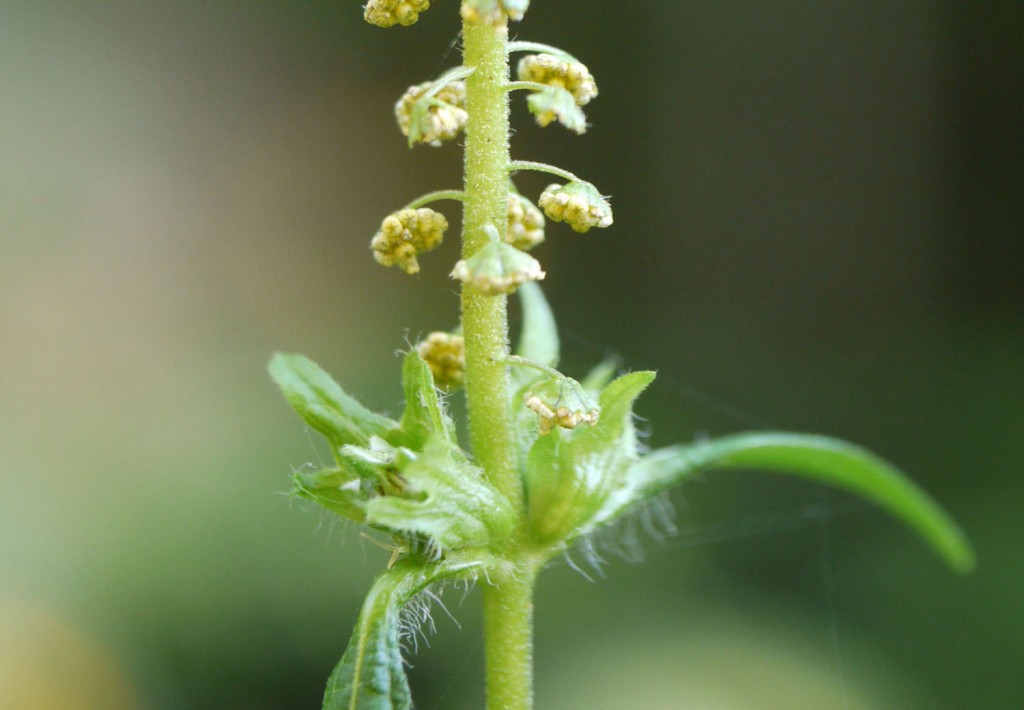
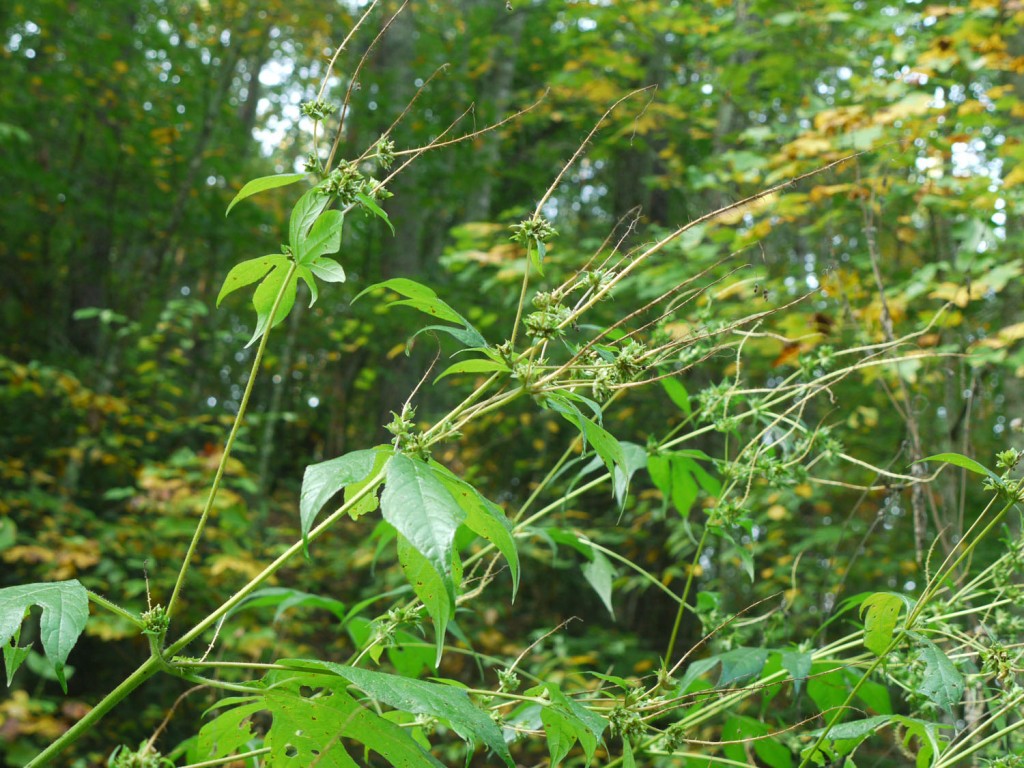
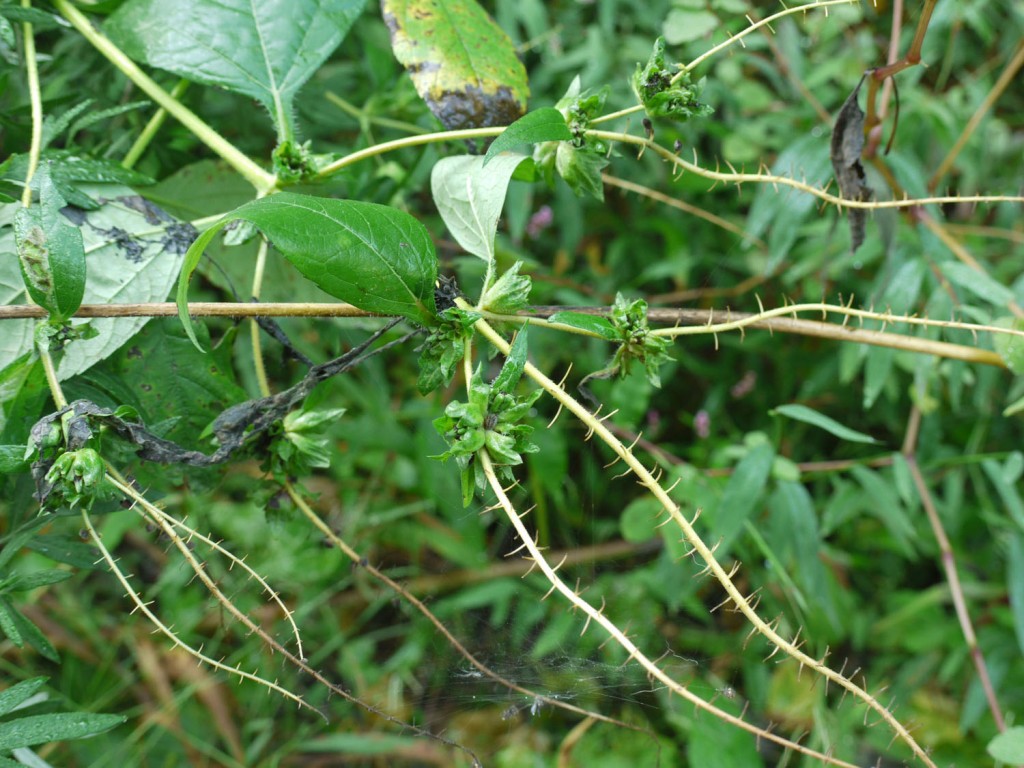

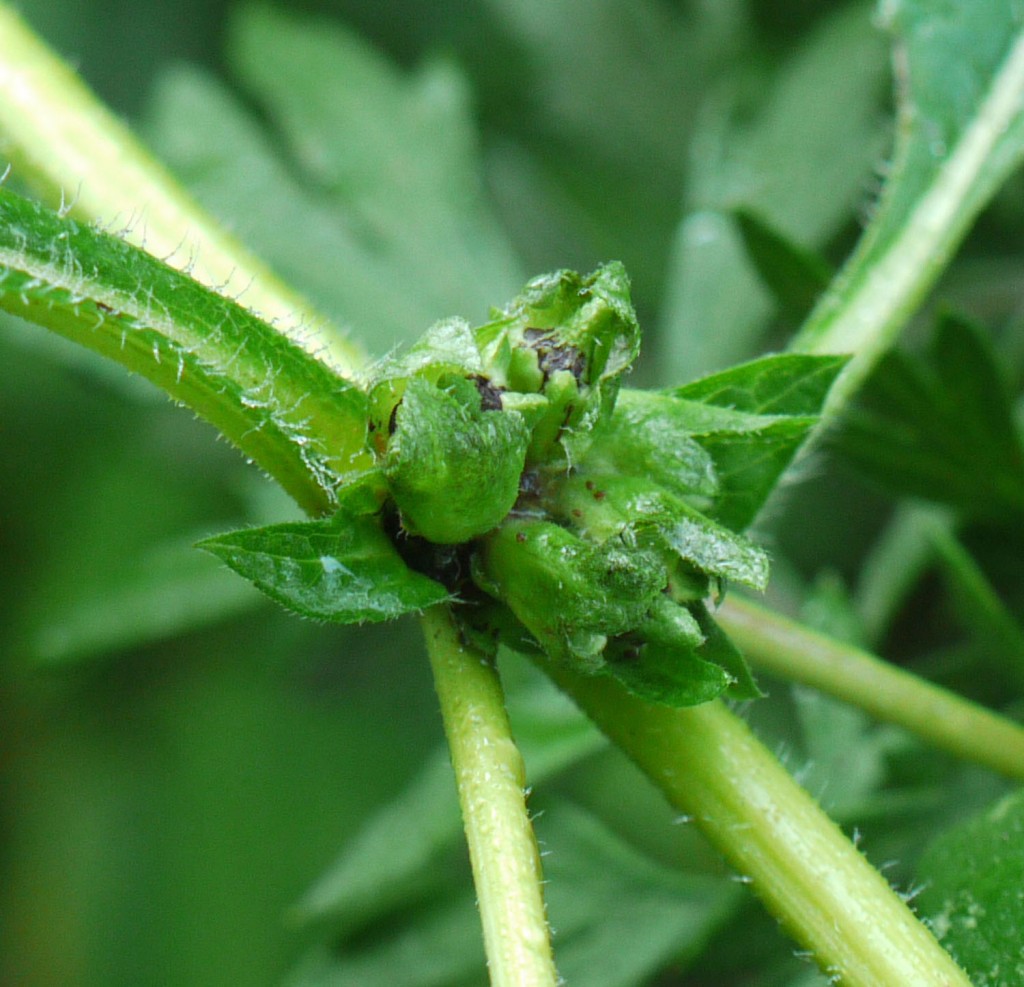
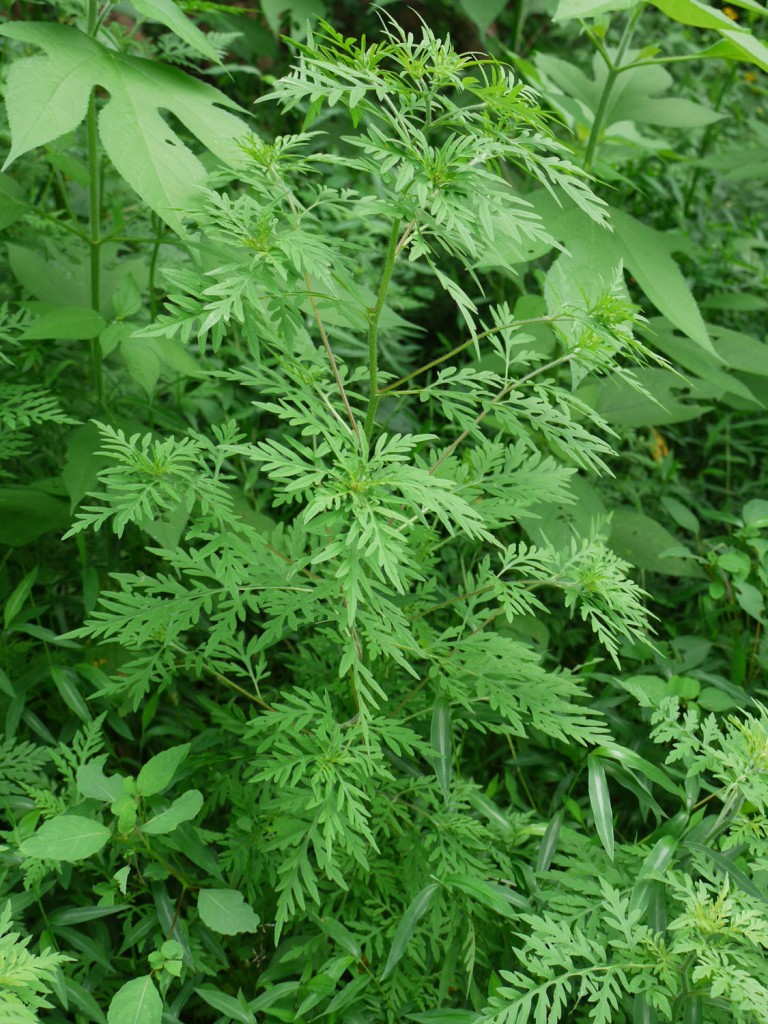



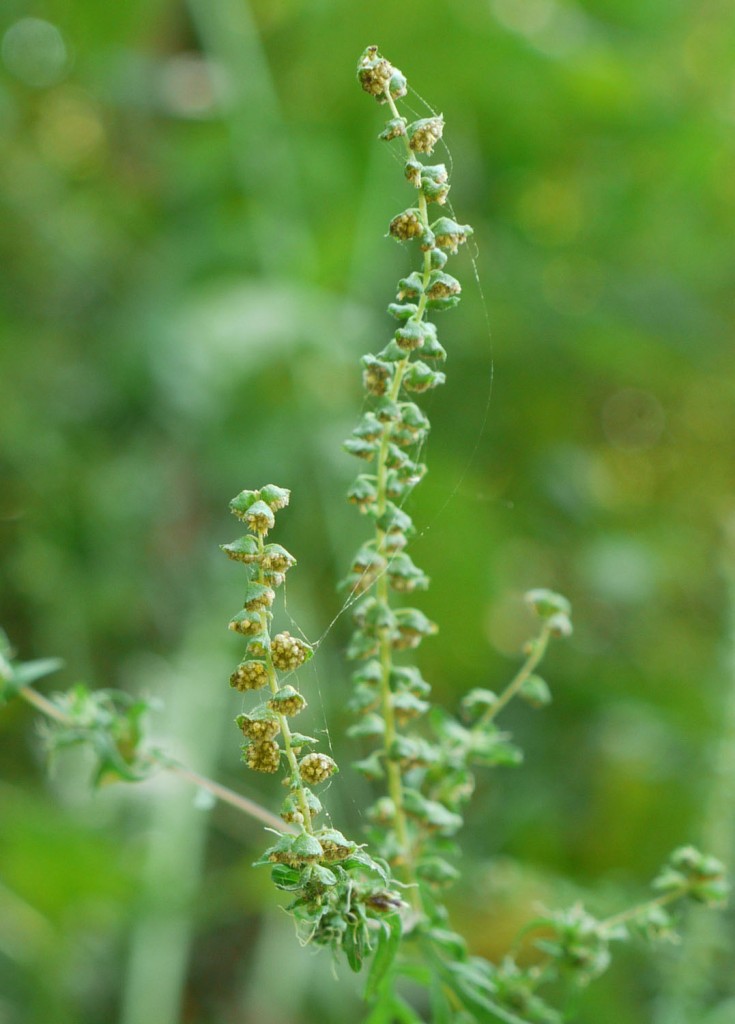
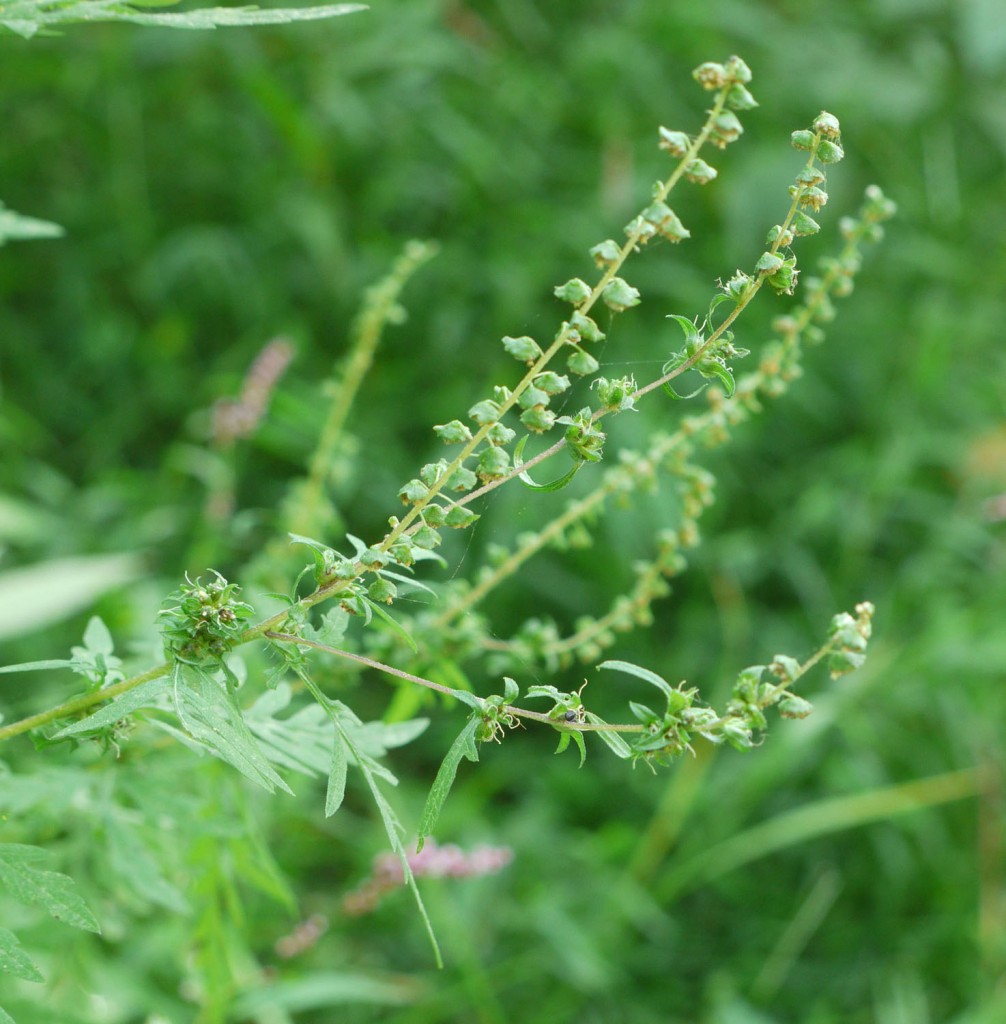
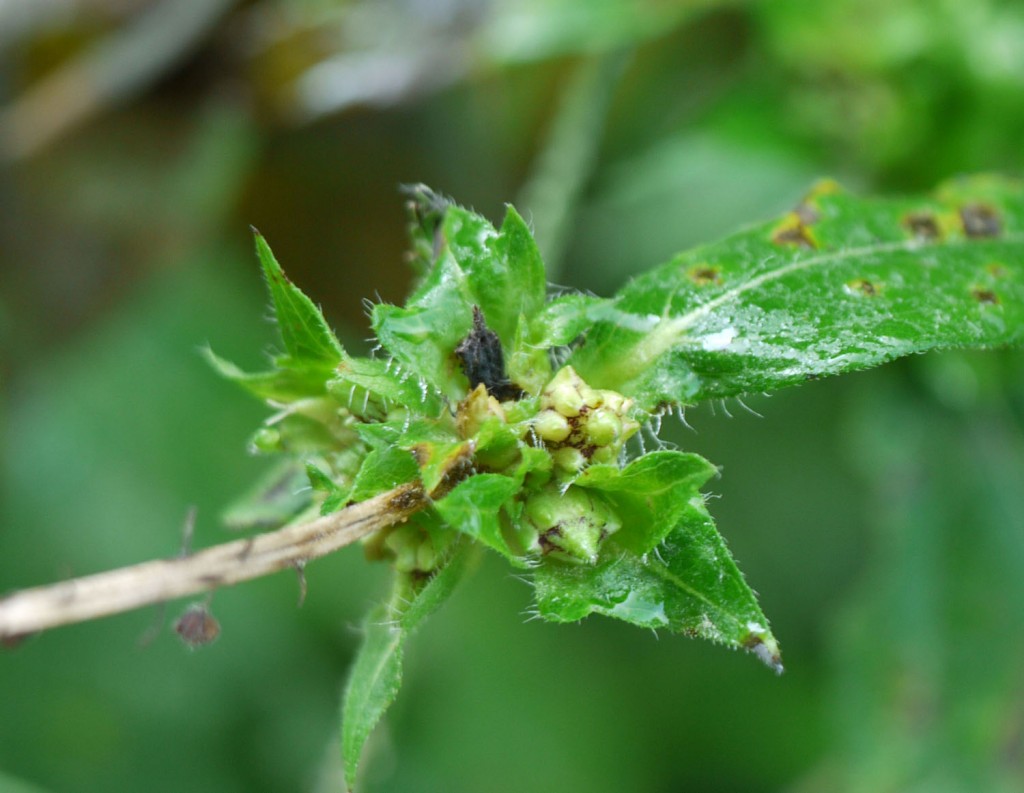
Pingback: Is this mugwort? Or something else? | Identify that Plant
I LOVE RAGWEED>
How can anyone like ragweed and why would you ever SMELL it!
It is one of the worst allergens and is the cause of much misery from August until the first frost. I pray for frost to kill it And where we live it doesn’t freeze sometimes until December or January !
The FDA has taken all the good medications to fight this terrible weed off the market!
Don’t smell I if you suffer from allergies or asthma!!!
I would die because I have both!
I live in Florida and have no allergies. I can say I love ragweed.
I love Ragweed too. Just because one person suffers doesn’t mean everyone does.
actually, one of the best antidotes to this allergy is to take medicine made from ragweed. so while sniffing it might not be a good idea, ingesting the plant in tincture form might help quite a lot.
I couldnt find the ant anywhere in that picture haha
I think you were looking at the wrong pic. It was the next one down.
Same here.
Cath, ragweed is its own remedy. Tincture the flowing tops in 100 proof vodka for 6 weeks and you have a wonderful allergy remedy! Susun Weed has very helpful YouTube videos on the subject.
@Cath You know, if you actually tried crushing and smelling the leaves (before the pollen production begins in late summer, as you observed) you’d find it quite harmless. Hyperbole like yours makes charming entertainment 😉 I, for one, usually “lean in” to anything challenging, which requires a commitment to growth. Research and try out Crystal R’s suggestion and you may outgrow anything, even something as identity-linked as an allergy. I did it with gluten intolerance twenty-five years ago…
how and what did you do for your gluten intolerance? I was recently diagnosed with “possible” celiac’s disease.
Pingback: Ragweed: Friend or Foe? | Jersey Girl Organic™
Pingback: In Defense of Goldenrod
Are the ragweed plants sun lovers? I seem to have some in part shade. What can be done to keep it out of the flower bed? Unfortunately part of being on the woods is that you get all the seeds coming through the jet stream not just the ones you would like. I am in Zone 6, we have had a lot of rain this year, so there are many weeds that just went crazy. I refuse to use herbicides so I have a mess this year.
I’ve seen Ragweed growing in both sunny and shady locations. Since I, too, do not like herbicides, my method is to pull up the plants — preferably after a good rain so they pull up easily, and preferably before they start blooming and turning to seed. It takes some work and is not 100% effective because, as you noted, new seeds arrive all the time. However, I can usually keep ahead of most weedy plants — particularly in vegetable and flower garden beds.
You all have been very informative. Thank you.
Gary
Thank you for this webpage. You have taught this allergy sufferer how to avoid ragweed instead of goldenrod.
I think I have the common ragweed, does it smell kinda like citronella?
I would really like to know as well. What does it smell like?
Common ragweed does not have any distinctive smell.
When I was a kid we used to call goldenrod ragweed but we were incorrect -goldenrod is a beautiful plant with yellow flowers which blooms in the fall around the same time is ragweed hence the confusion but goldenrod depends on pollinators for fertilizing its flowers unlike ragweed which just sends its pollen out into the air – so goldenrod is not a problem for allergy sufferers and is a wonderful food for pollinators plus it looks nice unlike ragweed (in my humble opinion).
Pingback: So Many Goldenrod Species! - 5 Minute Naturalist